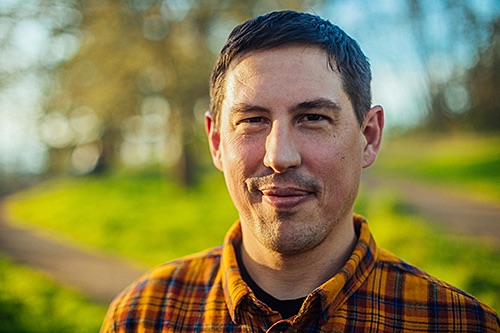I didn’t make the NaNoWriMo goal, not even close. I think I accumulated just over ten thousand words. There were all those assignments to grade, more trips to lead, and a Thanksgiving break with the in-laws. I also had no idea how to write a young adult novel, or any kind of novel really. My characters felt flat and simplistic, and I had no idea who I was writing for. When my contract ended at the end of the semester, I put the manuscript away and headed back to Oregon.
My wife was right, as usual. Nothing catastrophic happened. I got home just before Christmas, which was rainy and perfect.
Three years later, my daughter just entering high school, I pulled the manuscript back out. The image of those sisters and that stuffed animal still haunted me, but time had altered the emotional weight. The moment had been remembered enough times that it had become something new in the remembering, something mixed together with other images and experiences. I made the main character older and gave her a new name: Emma. I decided to put her on a river. Putting her on the river was everything.
I’ve been a white-water kayaker for over twenty years. Setting the book on a river trip gave me a way to understand Emma that I wouldn’t have found otherwise. Because the river was a world I knew and a language I spoke, I felt more confident trying to guide Emma back home. And with that confidence, I think I actually started to let Emma talk in her own voice, and then after that it just became a matter of listening to her. One afternoon I even realized that on days I didn’t write, I actually felt sad about not getting to spend time with her.
I finished the final draft alone in a cottage on the Oregon coast during a week of gray and windy weather, my wife and daughter back home. After writing in the morning, I’d walk along an empty beach to where Beaver Creek flowed into the Pacific. With the tide out, the creek was only a few inches deep as it braided its way toward the crashing shore break. When I began the book, my daughter was just starting high school. As I finished, she was leaving for college. I wondered where life had taken those two sisters—wondered which trails they were on, which switchbacks they were negotiating. Did they take their kids to the Grand Canyon? I wondered who held the stuffed animal now.
The same loneliness and fear I’d felt on my way to Arizona still sweeps over me from time to time, but it is a loneliness and fear that Emma has helped me learn to deal with. In Emma’s case, all she could do was to keep heading down the river, hoping to find help, which she does. In my case, all I could do was to keep writing and keep paddling through it. Out on the coast, I stood facing the wind, watching everything flow together. I took a few deep breaths and turned around for the hike back. Somehow in writing Emma’s story, I’d discovered the strength to survive my own.

